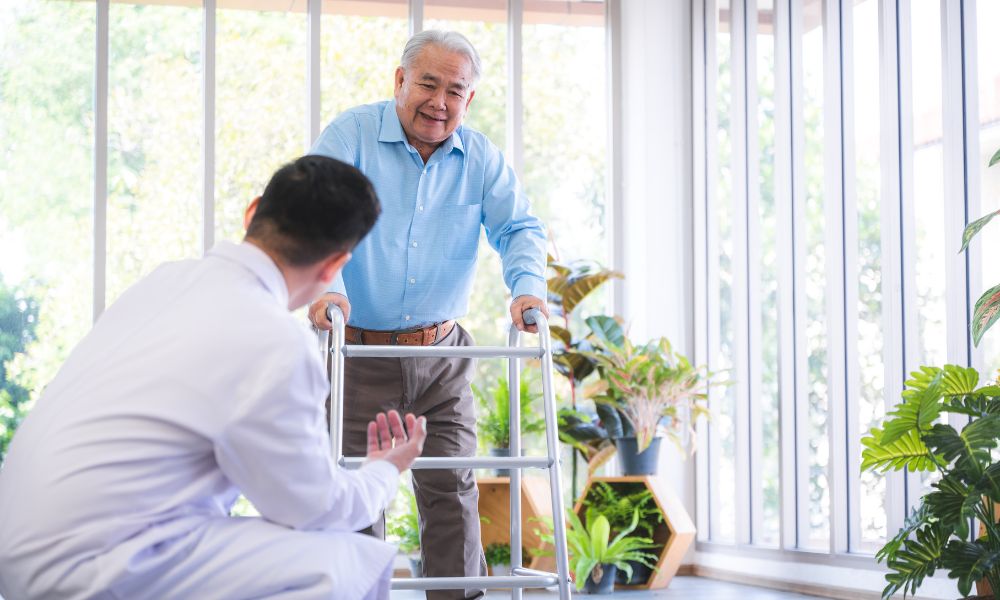Best Orthopedic Clinic in Nagpur: Minimal guide for effective care

Best Orthopedic Clinic
Orthopaedic specialization in the field of physical therapy pertains to the prevention of disabilities and the rehabilitation of individuals experiencing disabilities due to dysfunctions in the musculoskeletal system and its associated neurovascular elements. This practice focuses on both existing and potential impairments in physical capabilities and movement. An orthopaedic clinical specialist employs advanced techniques and methodologies to guide patients towards achieving optimal functionality through corrective, adaptive, and preventive management of the neuromusculoskeletal system.
What do Orthopedists do?
An orthopedic physician may be able to assist you, regardless of whether your pain is dull or sharp, chronic or acute.
Orthopedic doctors can assist in enhancing range of motion
Discomfort, inflammation, trauma, and stiffness in the joints can all contribute to a restricted range of motion. When mobility is compromised, engaging in daily activities such as lifting objects, self-care, and walking can become challenging or painful. Orthopedic specialists are available to assist you in enhancing your range of motion and facilitating a return to your normal activities. This improvement in mobility is frequently achievable through physical therapy, non-invasive treatments, and, in certain cases, surgical intervention.
Orthopedic doctors can make it easier to perform everyday tasks
Numerous individuals choose to endure discomfort, accepting limitations in their range of motion, stiffness, and other bothersome symptoms that do not significantly impede their daily lives. However, when these issues escalate to the point where performing routine activities such as reaching for items in a cabinet, bending to retrieve objects from the floor, or simply getting out of bed or taking a walk becomes challenging, it is advisable to consult a physician. Orthopedic specialists are available to discuss your symptoms, diagnose their underlying causes, and develop a tailored treatment plan that aligns with your lifestyle.
Orthopedic doctors can treat injuries and may be able to help prevent injuries
Individuals frequently seek the expertise of orthopedic doctors for a variety of conditions, including broken bones, compression fractures, stress fractures, dislocations, muscle injuries, and tendon tears or ruptures. Athletes, in particular, often collaborate with orthopedists to mitigate the risk of future injuries and enhance their performance levels.
For instance, certain athletes may be predisposed to shoulder dislocations. Once an athlete has experienced a dislocation, the likelihood of subsequent dislocations increases. Therapeutic interventions may be effective in preventing these occurrences.
Orthopedic surgeons are skilled in repairing fractures and addressing injuries to muscles and tendons, among other procedures, thereby improving functionality and alleviating or eliminating pain. They frequently collaborate with other healthcare professionals, including therapists, rehabilitation specialists, and pain management experts, to ensure comprehensive treatment. This multidisciplinary approach can lead to enhanced functionality and mobility, decreased pain, and an overall improvement in quality of life.
When to visit an Orthopedic Clinic?
If you are suffering from discomfort in your muscles, joints, or bones, or if you are encountering issues with your joints, you might be contemplating whether to consult a physician. Should you exhibit any of the following symptoms, it is advisable to schedule an appointment with your doctor for a thorough evaluation.
- You are experiencing pain, stiffness, or discomfort that hinders your ability to carry out daily tasks.
- You are suffering from chronic pain, which persists for more than 12 weeks.
- You have observed a reduction in your range of motion.
- You feel a lack of stability while walking or standing.
- You have sustained a soft tissue injury that has not shown improvement after 48 hours.
What conditions do Orthopedic Specialists treat?
Orthopedic Physicians Addressing Frequently Encountered Conditions
Plantar Fasciitis
- Inflammation of the plantar fascia ligament in the foot occurs due to excessive strain on the ligament that supports the arch.
- Common symptoms associated with this condition are pain, stiffness, and swelling.
- Treatment options may involve rest, physical therapy, the use of anti-inflammatory medications, or the application of orthotic devices.
Carpal Tunnel Syndrom
- Pressure on the median nerve in the wrist leads to this condition.
- It often arises from repetitive movements or underlying issues such as obesity, diabetes, rheumatoid arthritis, hypothyroidism, and pregnancy. Common symptoms consist of pain and inflammation in the wrist.
- Treatment options may involve rest, the use of braces, physical therapy, or, in more severe instances, surgical intervention.
Claw Toe/Claw Fooz
- Toes or feet take on a claw-like appearance.
- Can be a congenital defect or develop later in life due to muscle imbalance or other foot abnormalities.
- Treatments include orthotic devices, physical therapy, or surgery for severe cases.
Brachial Plexus Injuries
- Damage to a network of nerves extending from the neck to the chest, shoulders, arms, and hands is involved.
- This condition may arise from overstretching or severing of the nerves, which can occur during challenging childbirth.
- Symptoms may manifest as a loss of sensation or motor control in the wrist, hand, or arm.
- Diagnosis is typically achieved through imaging techniques, and treatment options may include physical therapy or surgical intervention, depending on the severity of the condition.
Spinal Stenosis
- The constriction of areas within the spine leads to nerve compression.
- This condition is frequently attributed to osteoarthritis.
- Common symptoms encompass discomfort and limited movement in the lower back.
- Treatment options may involve physical therapy, medication, or surgical intervention in more severe instances.